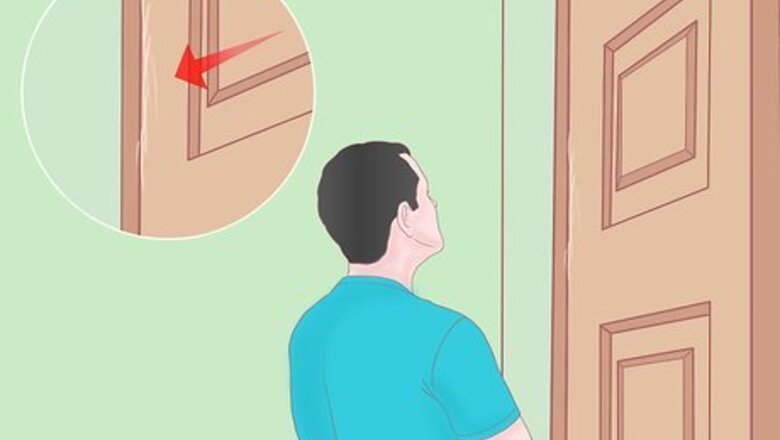
views
X
Research source
The key to fixing a sticking door is to determine what is causing the issue, and then you can decide if you can fix the problem with a simple trick or if you need a more intricate solution.
How to Find the Problem Area
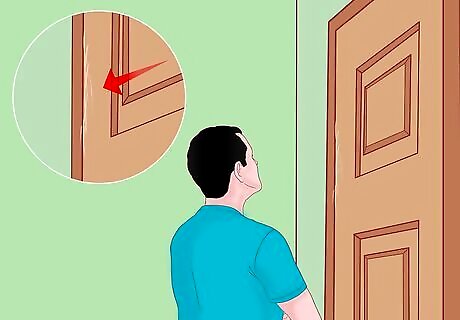
Examine the door with your eyes. Look for scratches in the paint or any other noticeable damages to the door and frame. Also check for grime or any sticky buildup that may just need to be cleaned. Close the door and run your eyes along the gap between the door and the frame, noting places where the gap is very thin. It is best to inspect an exterior door in a sunny or well-lit area.
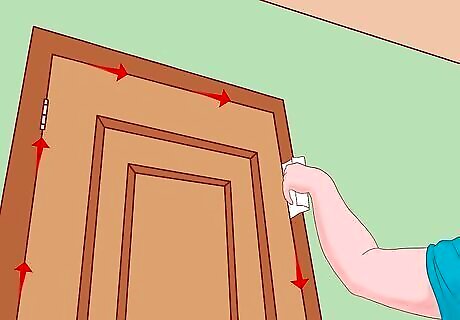
Run a piece of heavy stock paper around the closed door. This is very useful if you can’t determine where the door is sticking by physically examining it. The paper should glide smoothly around most of the door. Wherever the piece of paper gets stuck is the problem area.
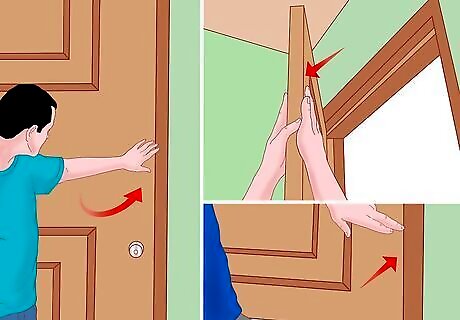
Look for sticking areas as you open or close the door. Try closing the door with your hands on the bottom, the side, and the top. This will allow you to feel where there is the most resistance as you close it.
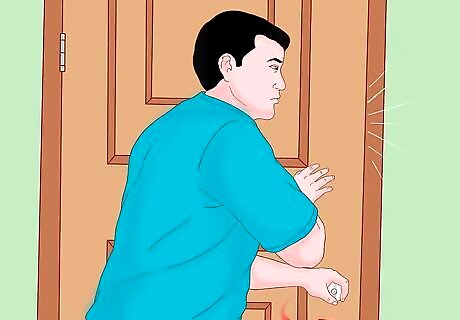
Listen to the hinges. If the hinges are squeaking, that could be the cause for the door to stick. If you hear this, it indicates that they need to be oiled.
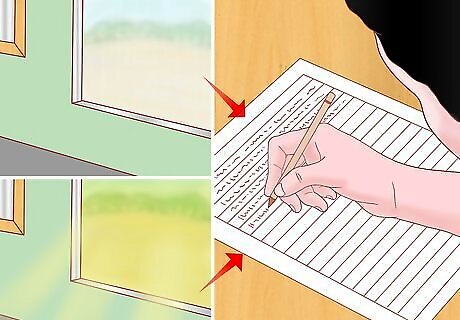
Note the time of year. If the door seems to be only slightly sticking, it is probably caused by changes in humidity. Wood expands when humidity increases, and shrinks when humidity decreases. It is important to understand this, because a door that sticks in the summer may not stick in the winter. In this case, you would try a less drastic solution, such as lightly sanding the door, or else it may be drafty and shrunken come winter.
How to Address Seasonal Sticking
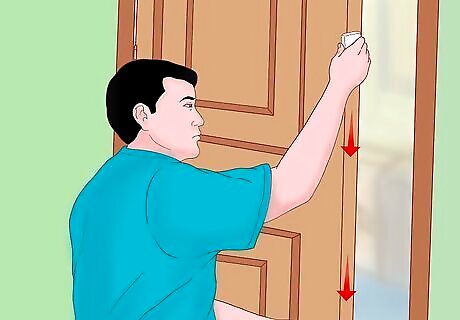
Rub the problem area with bar soap. This should reduce the friction and allow the door to close more smoothly. Use a dry, moisturizer-free soap that leaves a powdery residue on the sides of the door.Of course, this is a gentle and temporary solution and will need to be repeated sporadically during times of humidity.
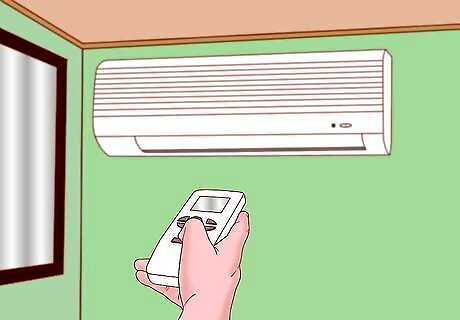
Run your air conditioner. One of the functions of the AC is to remove excess moisture from the air and decrease the humidity level in your home. While this can be a costly solution, it will help with your sticking doors. As the humidity in your home is lowered, the wood door will shrink in size.
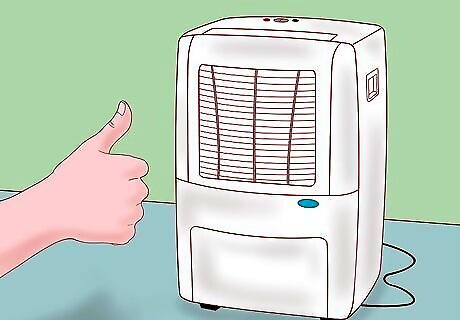
Invest in a dehumidifier. If humidity causes your door to swell and stick, try running a dehumidifier in the room. A dehumidifier works by sucking in air, removing the air’s moisture, and expelling the air back into the room. The main advantage of using a dehumidifier is that it is portable, which allows you to place it close to the sticking door.
How to Lubricate the Hinges
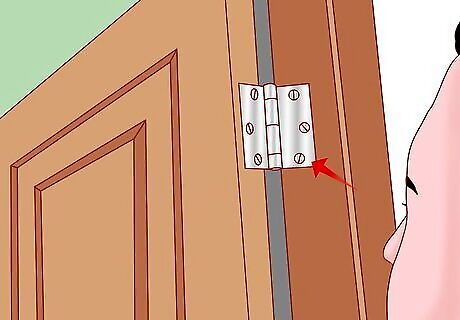
Decide if the door hinges are causing the trouble. When a door is opened and closed repeatedly, it’s no surprise that they can start to tarnish. Scratches and other superficial damage to the hinge can create friction and cause the door to stick. If you are worried about the lubricant possibly staining the door, you can take the additional step of removing the door from the frame. You can find out how to remove a door from the hinges here.
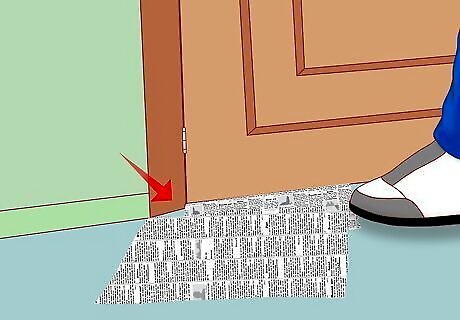
Lay newspaper on the floor. Just like the lubricant can stain the door, it can stain your floor. Cover the area directly under the hinges you are working on to prevent any dripping.
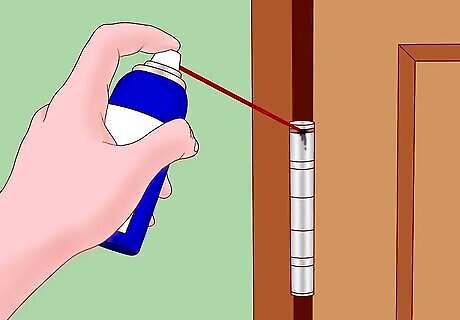
Apply petroleum jelly to the hinges. After you’ve done this, open and close the door a few times to work the jelly into the hinge joints. WD-40 would also have the same helpful effect on your door, but it is messier and dries out faster.
How to Tighten the Hinge Screws
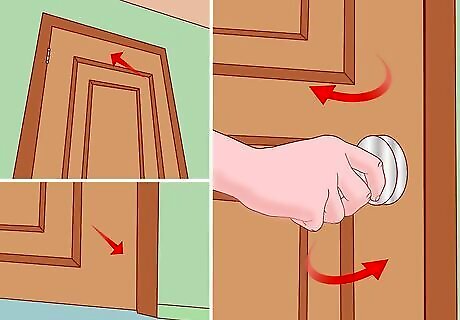
Examine the bottom and top of the door as you open and close it. The door may be sticking near the top or dragging at the floor. If this is the case, the screws in the hinges may have loosened over time.
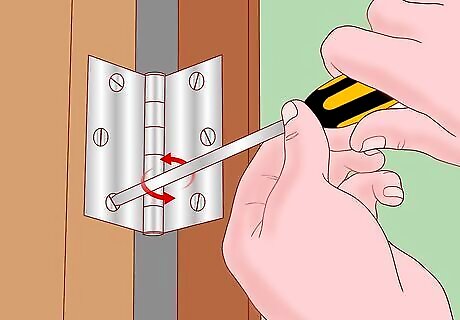
Use a screwdriver to tighten each screw. Do not use a drill, because over-tightening the screws can cause damage to the wood and cause bigger problems. Screw it in clockwise, and work slowly to make sure you don’t tighten too much. Hinge screws are known to strip out, so you may have to add a longer screw or plug the hole and then re-screw it.
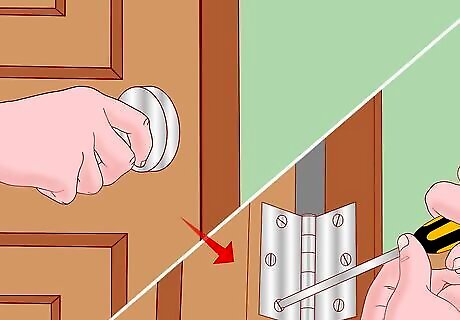
Test your handiwork. You may need to go back and tighten or loosen them. By loosening the screw you will reduce the gap between the door and the frame, and vice versa. Play around with it until it fits perfectly. If that didn't work, the hinges might be bent. Remove the hinge pin and use a wrench to slightly bend the hinge knuckles back so when you reinsert the pin, it pulls the door back just enough to open easily.
How to Trim the Door
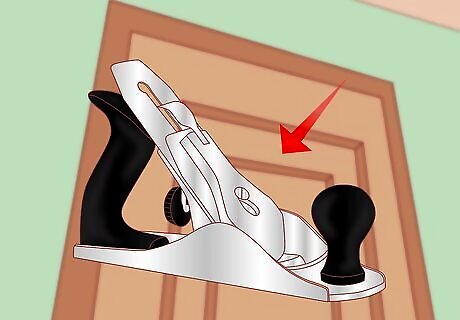
Confirm that the problem is not a temporary or more easily-solved problem. If you’ve checked that the screws are firmly in the hinges, the hinges are well-oiled, and determined temporary humidity is not the issue, you may need to trim your door. This is an intricate, and permanent, fix.
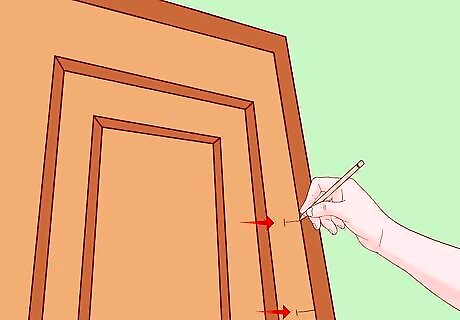
Mark the spot on the door where it is sticking, and remove the door. You can find out how to remove a door from the hinges here.It is important to note exactly where the door is rubbing, so that you don’t over trim your door.
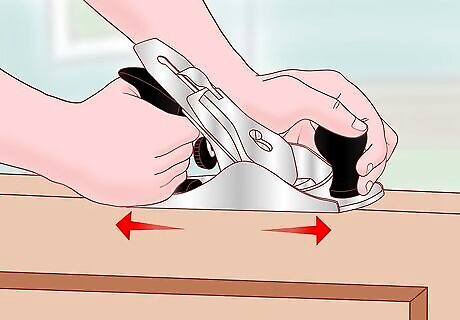
Use a sharp block plane to trim the door. A block plane is a simple woodworking tool that allows you to thinly shave wood.It is perfect for this task, because you can make tiny changes to the width or height of the door without causing oversized gaps between the door and frame. If you’re an amateur or only have a little wood to remove from your door, you may want to try using a palm sander to do this instead.
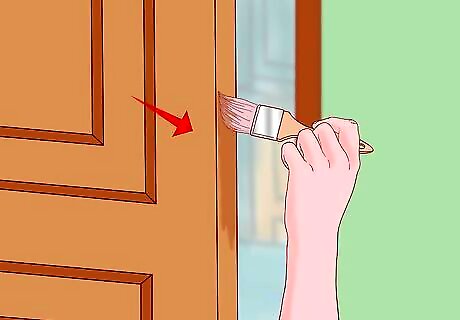
Repaint or refinish the section of door that you have trimmed with the block plane. Don’t do this step until you’ve ensured that it is the correct size, or you may have to do it twice. After the paint has dried, your door will be looking- and opening- like it is brand new!

















Comments
0 comment